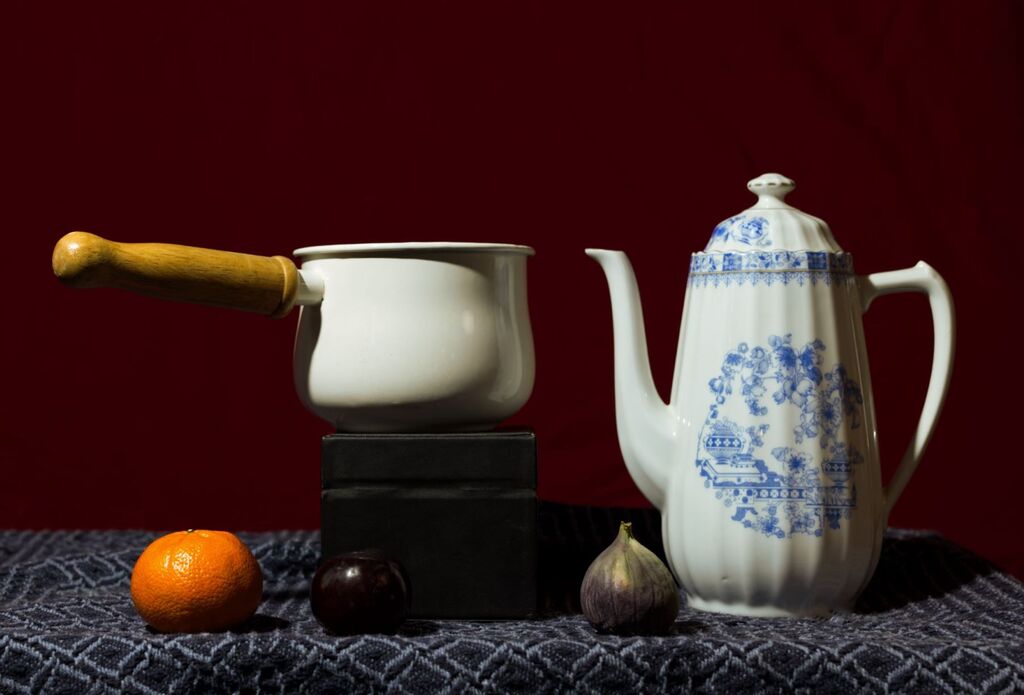Still Life Photography for Beginners takes us into many aspects of still life photography and how we can create beautiful still lifes to sell.
In photography, intention is always important. Knowing what you want to express as an artist is part of the mind set that leads to successful still life photography outcomes.

The very basis of good still life photography is to develop your ability to create compositions.
A good sense of design is the first step – this can be learned through constant practice.
As you get better, you will be able to distinguish between a strong and weak composition. Balance is a key factor in still life photography composition. This develops as you experiment with how you place the objects in conjunction and in juxtaposition to each other.
The spaces between objects have a meaning, they are referred to as negative space. Which is space that allows the viewer to breath out for a moment and contemplate what they see before moving their eyes on to the next part of the composition.
This all happens rapidly, normally we view a photograph with various movements of the eyes that cause us to repeatedly scan everything, understand, digest, look again, then find a central point in the framing and contemplate that part of the photographic still life until we feel the emotional value of the piece.
Composition in a still life photo is not only the shape and form of the objects. The colours must be either harmonious or contrasting; there must be some type of schema for the viewer to enjoy.
It’s best to study colour from the colour wheel. This allows you to develop a feeling for how colours work well together. If you intend on creating classical still life photography, then harmony is most commonly used, if you want to experiment with juxtapositions of objects and colours, then take a look at modern painters and photographers to get some good ideas how they still use the principles of colour schema to create powerful compositions with colour and objects, mostly, these types of photos can be hard work and often tip you into an area of work and thought that can be edgy and difficult to get right.
The problems of working in harmonious colours and objects is that you can create a composition quickly and it looks great, but it might turn out to be a bit clichéd.
So, it’s still hard work coming up with great ideas – practise makes perfect in this case.
There are no rules about still life photography that dictates which objects are suitable for still life photography. You can use rustic objects found in the home, the kitchen, or outside in the shed or the garden. It really depends on what type of atmosphere you want to create as to which objects you use.
A still life, in history, represents an idea of decadence and wealth. Well seated houses of the 17th century and later would decorate their rooms with exotic fruits and objects that people cherished as expensive and rare. Painters were commissioned to create still lifes to decorate the walls and with this, the expression became the decadent use of wealth as a display of over abundance. To fritter your money and objects away for fun was away of sticking your nose up at the world.
In spite of the decadent history of still life fine art, still life photography has endured as an art form that brings great pleasure to viewers in most parts of the world. It has strong position in society as wall art. It is also the basis of presenting products in product photography. Sometimes very simplistic with a white background and the object simple in interesting light. But the still life photography principles are used to create commercial product photography everyday – so it’s great practice for product photographers.
You can use apples and oranges as your objects, or you can go full on modern and use mobile phones, cups of coffee, laptops, and anything from the modern 21st century world to represent a still life photography idea.
The real challenge is still life photography is to work with many different textures, colour combinations, Light modelling, and materials. You have to become a collector of shiny objects to build your box of goodies to use in still life photography.
What Makes a Good Still Life Photograph?
This is a subjective question and can’t be answered with rules or definitive answers.
There are technical aspects that can expose a still life as a glaring mistake – bad lighting effects that are not pleasing to the viewer, colours that clash unpleasantly – there’s a difference between clashing colours and contrasting colour schemes.
A good composition that makes excellent use of the space chosen, harmonious colours, texture that have been well brought out with lighting, and shadows that are not accidental all go a long way towards creating a very good photographic still life composition.
Using the rule of thirds, looking for the natural shapes that occur in our everyday lives, cones, spheres, triangles, squares, oblongs, circles, all these create the forms that are familiar to everybody. It’s about how the photographer puts it all together that makes all the difference.
Finally, the camera angles that you use create small but significant changes to the expression of your still life photography.
Lens focus, depth of field can change everything for the final outcome. Experimentation is key to becoming a great still life photographer. Try everything that comes to mind, and search for interesting objects that could challenge your present knowledge and help you to move forwards with your abilities.
